Greatest tank battle in history: Battle of Kursk| World War 2
The greatest tank battle in history changed the course of World War II itself. Mighty Germany failed to invade Stalin’s Soviet Union. The two greatest battles in history- Battle of Kursk and the Battle of Stalingrad altered the face of the Eastern Front. The Battle of Kursk statistics estimates heavy loss on both sides in terms of tanks and aircraft. The Battle of Kursk casualties is, interestingly, more on the winner’s side. In this article, we will discuss these two major World War 2 battles, look at the battle of Kursk map, the battle of Kursk casualties, the battle of Kursk statistics, and the battle of Kursk movies
Why was the battle of Kursk fought?

Adolf Hitler was very open about his beliefs. His hatred for communism made it clear that the Soviets would be Nazi Germany’s ultimate enemies. Before invading the Soviet Union, Germany strengthened its southern flank. Romania, Hungary, and Bulgaria were already German allies. Hitler ordered the capture of Yugoslavia and pro-British Greece.
Germany invaded the Soviet Union in June 1941. Under Operation Barbarossa, Germany was to capture Leningrad, Moscow, and Ukraine simultaneously. Amongst these three Moscow slipped out of Germany’s hands due to delayed advance, Soviet counteroffensive, and brutal Russian winters.
In 1943, the Battle of Stalingrad proved to be a colossal defeat for the Germans. It was amongst the bloodiest World War 2 battles. The defeat of Stalingrad had also publicly humiliated the German dictator. Moreover, the Russians had also recaptured Ukrainian territory. Hitler wanted to prove to his rivals and even to his allies that Germany still stands tall. Hence, Germany launched what was going to be one of the greatest battles in history.
When was the Battle of Kursk fought?
Germany decided to launch a major offensive at the Soviets. The attack was aimed to secure Germany’s strategic position on the Eastern Front. Hitler saw an opportunity in the failure of the Allies to open up a second front for the Soviets. If they defeated the Soviets there could be a chance of them entering a peace negotiation ending the Soviets’ alliance with the USA and Britain. Also, Germans believed that their forces were stronger than before now in terms of arms. They produced an increased number of tanks and planes with enhanced weaponry.
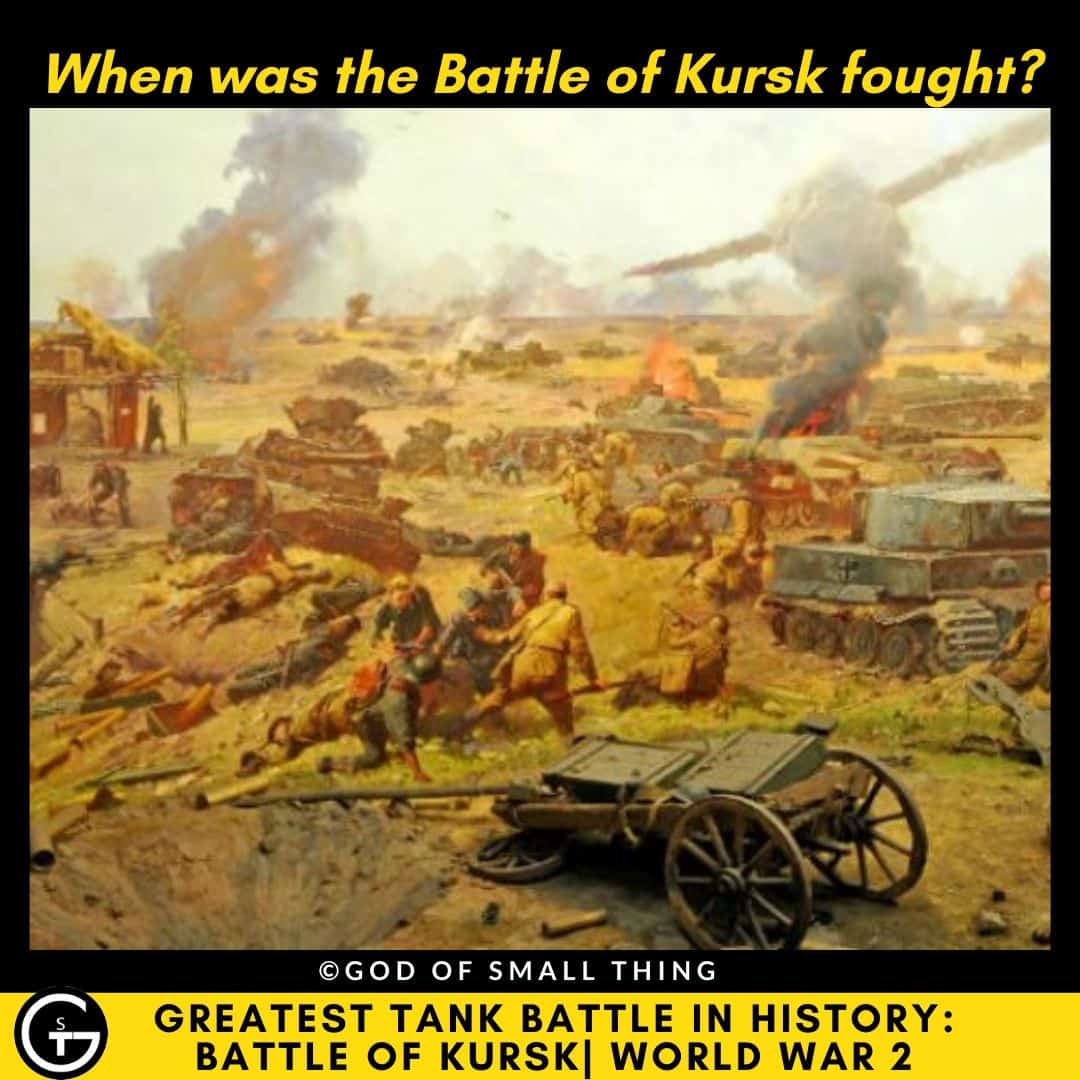
On July 5th, 1943, even before the Germans could launch Operation Citadel, the Red Army inflicted artillery bombardments on them. It delayed the German attack for some time. In the morning, Germany attacked the north of salient with 500 tanks. The Luftwaffe Air Force gave the attack an air cover. The Red Army, however, tackled every attack. Even the Soviet Air Force dominated over the Luftwaffe.
In the south of the salient, the Germans made their way 80 km southeast to Prokhorovka. The settlement witnessed the biggest tank battle in history. The Red Army destroyed the German offensive there despite receiving heavy losses. The German forces ultimately decided to retreat. During the retreat, the Soviet Air Force inflicted heavy destruction on German tanks and vehicles. The Luftwaffe was not in a dominating position in the aerial battle with the Soviet Air Force. This was one major reason for the weakened position of Germany in the battle. The Battle of Kursk statistics estimates the huge loss in terms of men and tanks on both sides. Finally, Prokhorovka saw the greatest tank battles in history come to an end.
Battles of Kursk statistics
While we do not accurately know the Battle of Kursk statistics, experts have estimated the figures. Germany lost nearly 2,00,000 of its men. It lost around 500 tanks, some 700 planes, and thousands of pieces of artillery. Despite winning the Battle, the Soviet Union suffered heavy casualties and losses. It lost around 2,50,000 of its men. Besides, it lost nearly 1,500 tanks, 3,000 guns, and a thousand planes. The Battle of Kursk casualties were heavier on the Soviet side yet they defeated Germany.
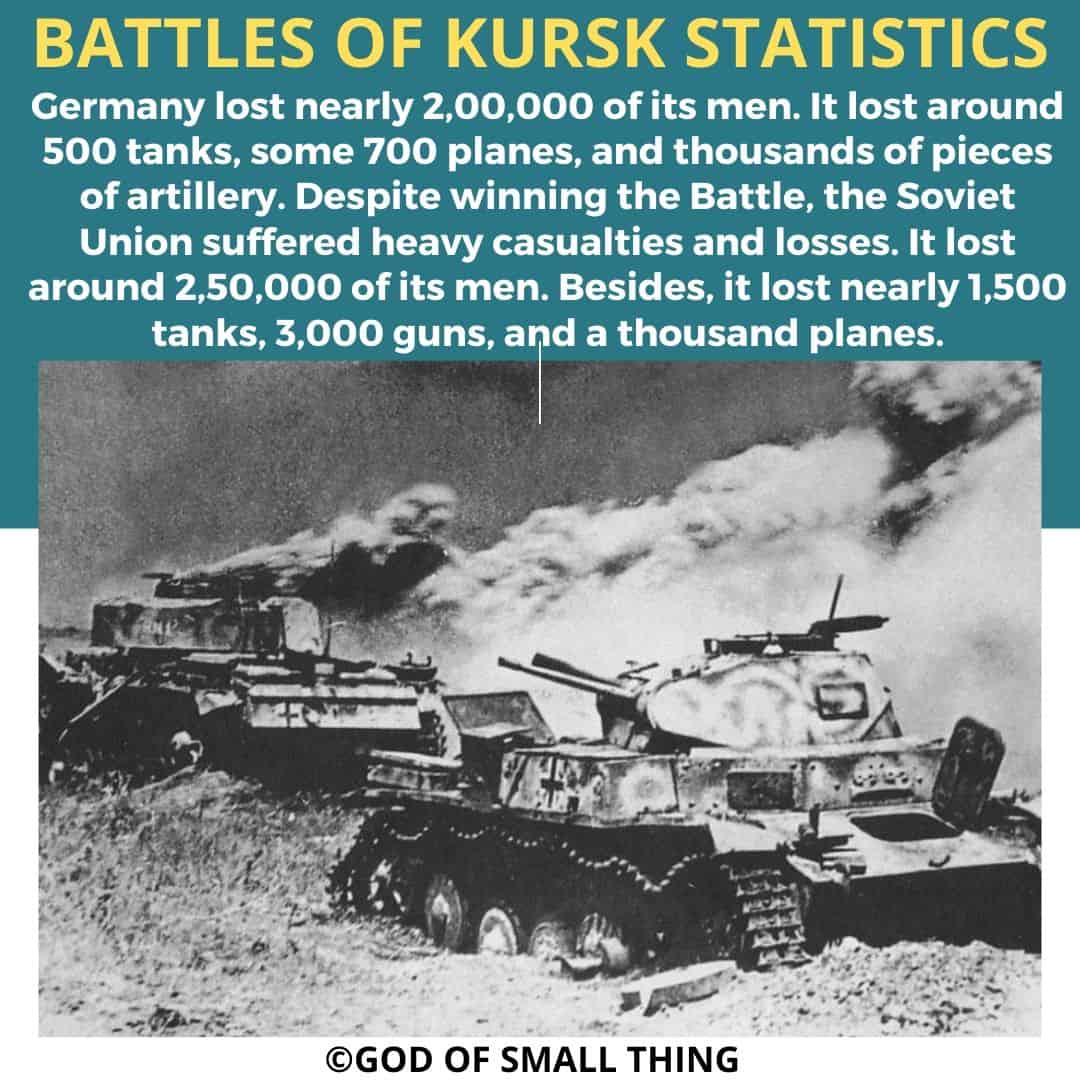
When the battle of Kursk was over, Germany was left with a defensive position on the Eastern Front. Despite tactical upper hand, Germany lost because of its overambitious planning, overestimation of its new weaponry and failure to estimate the Soviet’s air force and their ground defense. The Battle of Kursk, the greatest tank battle in history, decided the permanent fate of German position on the eastern front.
Germany’s epic defeat at the Battle of Stalingrad
The Battle of Stalingrad was another of the bloodiest World War 2 battles. It practically destroyed the notion of Germany’s invincibility.
By the spring of 1942, Germany had acquired parts of Ukraine and Belarus. Previously, in the winter of 1941-42, Germans had made an unsuccessful attempt to capture Moscow. Then, in 1942 again, Germany decided to attack Southern Russia. This time they chose to attack the Soviet city of Stalingrad. Stalingrad was an industrial center that manufactured artillery for the Russian troops. The capture of the city would cut the Soviet transport links to southern Russia. The Volga River that passed through Stalingrad connected the Western parts with the eastern parts of the country. Moreover, the city bore the name of Joseph Stalin, the Russian leader. Hence, the region was of great importance to both Germany and Russia.
What was the Battle of Stalingrad?
On August 23, 1942, the 6th Army of Germany launched its attack on Stalingrad. The Russians, however, successfully slowed down the German advances from north of Stalingrad. It cost Russia around 2,00,000 men. Meanwhile, the Russians shipped vital commodities like food grains out of the city. But more than 4,00,000 residents of the city were not evacuated. Stalin had ordered the civilians to take up arms to defend the city.
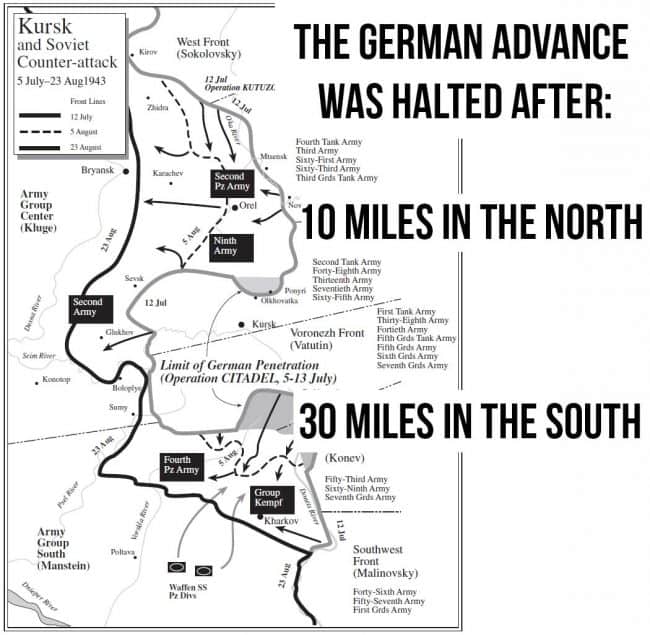
The German Luftwaffe Air Force ferociously attacked the city, especially around the Volga River. Dozens of airstrikes left the river passage destroyed. The attacks sunk several commercial Russian vessels as well. People were either killed or forced into slave labor in German camps. By September, the city was in ruins. The Soviets witnessed heavy casualties. Less the 20,000 troops and 100 tanks were left with them. The men took up fighting while the women dug trenches at the front lines. Stalin ordered his forces to not retreat. His generals soon arranged reinforcements to the city. Both sides engaged in rigorous fighting. Russian generals organized troops in the mountains to the north and west of the city. They surrounded the city and launched a counterattack.
How did the battle of Stalingrad end?
The Soviets successfully trapped the German troops in the city. The latter was left with no scope of access to basic supplies including food. To the disadvantage of the Germans, the Russian winters were about to arrive. The brutal winters added to the misery of the German troops. They were running out of ammunition rapidly. The Germans endured starvation and cold as long as they could. Finally, the German 6th army surrendered against Hitler’s orders in February 1943.
The Soviets killed nearly 5,00,000 German men and took 91,000 as prisoners of war. The Battle of Stalingrad was another of the greatest battles in history. It was also amongst the longest and bloodiest battles in world history. It was a war that practically destroyed the notion of Germany’s invincibility.
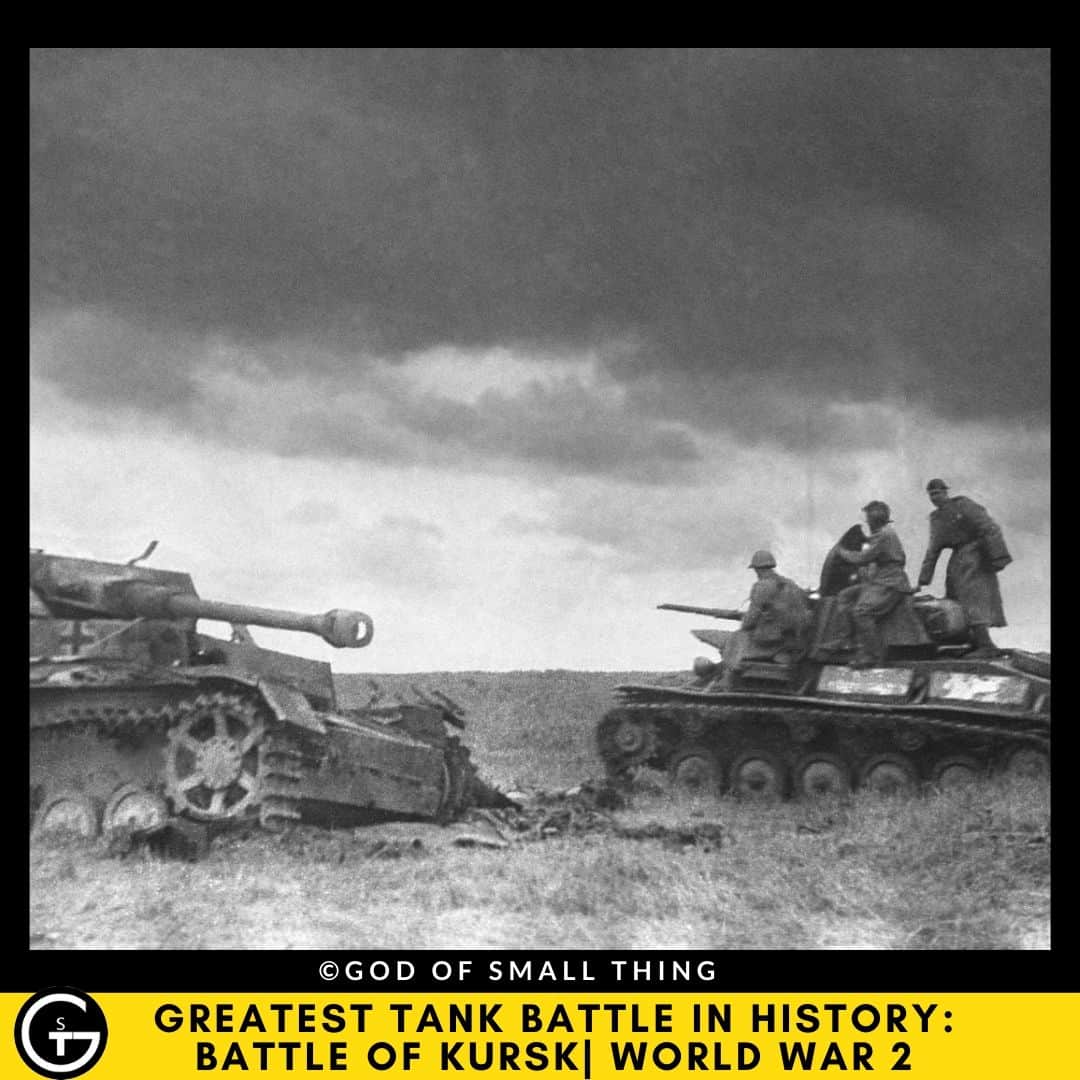
What is Kursk Bulge?
A bulge, also known as a salient, refers to an area projecting into the enemy territory. The troops guarding a bulge are at great risk. They are surrounded by enemy forces from multiple directions. The Kursk bulge was situated on the eastern front between Orel and Kharkiv. The Russian city of Kursk was situated within the bulge. The Kursk bulge extended 240 km from north to south in the Soviet lines. It then projected 160 km west into the German lines. You can scroll down to take a look at the Battle of Kursk map.
The Germans planned to attack the Soviet forces within the bulge from both north and south. Hence, they prepared 50 divisions of 9,00,000 troops and 17 armored divisions with 2,700 tanks and mobile assault guns for the attack. But the Soviets had already suspected the surprise attack. Consequently, they withdrew forces from key spots within the bulge. They also strengthened their position by laying deep antitank defenses and minefields.
The Germans launched their attack on July 5, 1943. They had entered the salient only 16 km in the north and 48 km in the south. In the process, they lost many of their tanks to the Russian antitank defenses and minefields.
Having gathered dominance in terms of troops and tanks, the Soviets began counterattacking on July 12. The succeeding Soviet forces went on recovering the city of Orel and that of Kharkiv by August 23. The Battle of Kursk was a major setback for Hitler’s Germany. Besides the dream of invincibility, Germany lost its offensive dominance on the Eastern Front. Even though the Soviets suffered greater Battle of Kursk casualties, they won the battle.
Battle of Kursk map
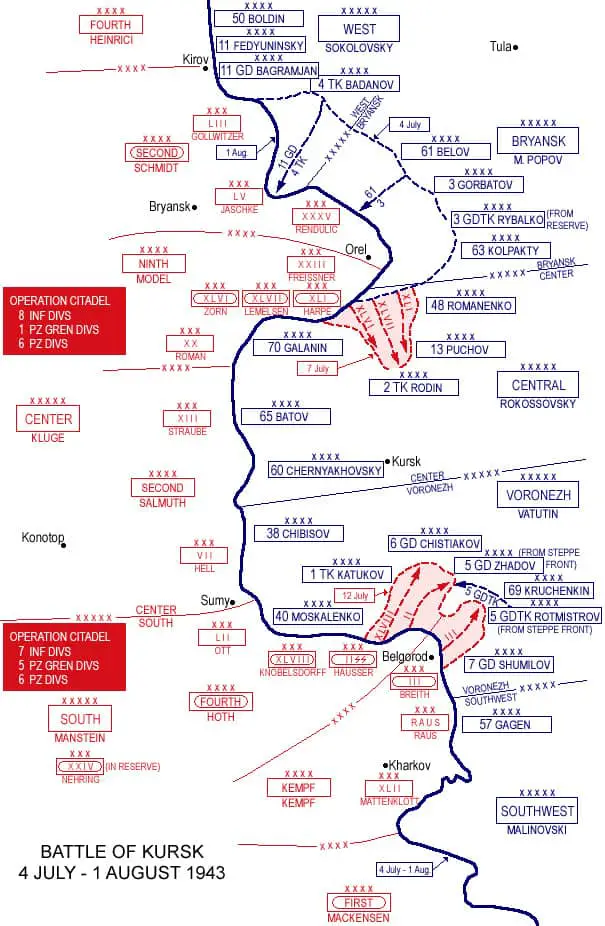
The Battle of Kursk took place in the Kursk bulge located on the Eastern Front. The city of Kursk was situated within this salient. Check out the visual depiction of the battlefield in the Battle of Kursk map.
What was Operation Citadel Begins?
The Battle of Kursk began in July 1943 when Hitler launched Operation Citadel. The German intelligence collected as much information as they for ex., the photographs of enemy defense systems in Orel and Kursk and so on. But they underestimated the size of the Red Army of the Soviets.
On the other hand, the Soviet military leaders had suspected the attack. Soviet Intelligence further confirmed it. Hence, they stood prepared for the German offensive.
For Operation Citadel, the German generals developed a tactic called the double envelopment. The Wehrmacht was Nazi Germany’s unified armed forces. They would surround the Red Army defending in the bulge and then cut them off from the rest of the Soviet Union. One of the German forces would attack north of the bulge, moving south to the east of Kursk. There it would secure the rail from Soviet attack. Another force would attack from the south, moving north to meet the previous force. This way they would cut the bulge off from the Soviet Union.
Why did the Operation Citadel fail?
Hitler, however, delayed the operation to wait for favorable weather. The delay cost them the surprise element for their Blitzkrieg offensive. The German blitzkrieg tactics concentrated the combined force of motorized infantry, tanks, artillery, and aircraft on a rather narrow front. They made use of radio communication to coordinate an impactful offensive.
The Soviets, on the other hand, got an ample amount of time to prepare for the attack. They deployed their men in the Oriel-Kursk region. Reserves were also reinforced from all the less vulnerable fronts. Civilians mobilized to lay minefields, antitank traps, and deep trenches. They had focused on their defense strategy. The Germans relied on their training and equipment. Soviets, on the other hand, had seemingly endless manpower. Around 4 million German troops were deployed while Russia had 2 million troops at just the western front.
Let us now take a look at several questions related to the Battle of Kursk.
What is the greatest battle in history?
The Battle of Kursk is one of the greatest battles in history. The battle was Germany’s last chance to strengthen its offensive dominance on the Eastern Front. Germany’s technologically advanced forces engaged in a fierce battle with the endless manpower of Soviet Russia. The Battle turned tables in a way that altered the fate of WWII.
Indian Army Heroic Battles: The Complete Story of Battle Of Longewala of 1971: Indian Army Heroic Battles: The 1971 Battle Of Longewala
Which battle witnessed the largest engagement of tanks in history?
The Battle of Kursk involved the largest engagement of tanks in history. The estimated Battle of Kursk statistics finds that Germans had the strength of around 2,700 tanks. And the Red Army was also equipped with 3,600 tanks.
What was the greatest tank battle of WWII?
The Battle of Kursk tops the list of the greatest tank battles in history. It was one of the major World War 2 battles. The Battle was fought on the Eastern Front. Somewhere around 6,000 tanks were involved in the battle as per the estimated Battle of Kursk statistics. Germany lost 500 tanks and the Soviet Union lost 1,500 tanks in the Battle of Kursk.
Who won the Battle of Kursk?
Stalin led the Soviet Union to win the greatest tank battle in history. The Red Army, with support of the Soviet Air Force drove the Germans back to where they had started the battle. It also destroyed Germany’s last chance to strengthen its position on the Eastern Front. The estimation of the Battle of Kursk casualties, however, shows the heavier loss suffered by the Soviets. Yet, their human power outnumbered that of Germany.
What was the largest army in history?
Being the largest country in the world, the Soviet Union had the largest army in history. The seemingly endless manpower of the Soviet Union had nearly 21,00,000 soldiers. From a population of 190 million people, 11% served in the military. The Soviet manpower greatly outnumbered the German troops in two of the greatest battles in history in Kursk and Stalingrad.
What is the deadliest tank in the world?
We discussed the greatest tank battle in history. Let us now take a look at the deadliest tanks in the world:
- T-90 A Russia
- M1 Abrams USA
- Leopard 2 Germany
- Merkava IV Israel
- Challenger 2 UK
Why did Germany lose Kursk?
Germany received a massive defeat in the Kursk Bulge. Despite tactical superiority it faced hurdles in the execution of the plan. It lost one of the greatest World War 2 battles because of the following reasons;
- Over optimistic planning
- Underestimation of Soviet Union’s air and ground defense
- Underestimation of the size of the Soviet manpower
- Over estimation of its new and advanced tanks and weapons
- Delay in execution of Operation Citadel
What destroyed the most tanks in WW2?
The Battle of Kursk, one of the greatest battles in history, destroyed most tanks in WW2. The Battle of Kursk statistics reckon that Germany lost 500 tanks while the Soviet Union lost 1,500 tanks in the battle. It is, hence, the largest battle in terms of engagement and destruction of tanks.
Battle of Kursk movie
A number of Battle of Kursk movies have documented the greatest tank battle in history. Various documentaries, short films, and series of Battle of Kursk movies are available with clips from the actual Battle of Kursk. Below is a list of Battle of Kursk movie;
- The ‘World War II in Colour’ is available on Netflix. Episode 4: ‘Hitler Strikes East’ gives details about the battles fought on the Eastern Front between 1941 and 1943. The episode of this Battle of Kursk movie describes two of the greatest battles in history – Battle of Stalingrad and the Battle of Kursk.
- Netflix also presents a separate episode about the ‘Siege of Stalingrad’ in ‘Greatest Events of WWII In color’. This series just like the one mentioned above gives a detailed cinematographic experience about the greatest World War 2 Battles.
- Several documentaries about the Battle of Kursk movie are available on YouTube.
- Here is a link to one such black and white documentary: https://www.youtube.com/watch?v=22xpNBJCS4U
The Battles of Kursk and Stalingrad marked massive defeats for Hitler’s Nazi Germany. On the other hand, Joseph Stalin led the Soviet Union towards victory despite suffering extremely heavy losses. These Battles shattered Hitler’s attempts to invade the Soviet Union. Germany permanently shifted to a defensive position in the Eastern Front. Both of these World War 2 battles drastically turned the fate of the war.
Source: Wikipedia
Another great battle was amongst India and Pakistan during the Indo-Pak War of 1965: largest tank battles: Battle of Asal Uttar Indo-Pak War of 1965

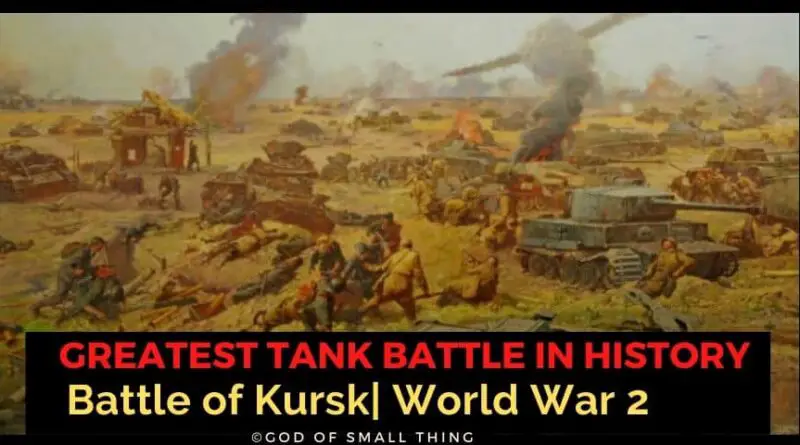

Pingback: largest tank battles: Battle of Asal Uttar Indo-Pak War of 1965
Pingback: Battles That Changed Indian History Forever